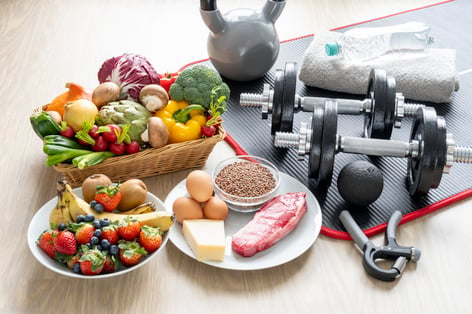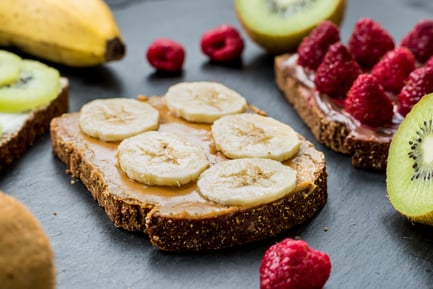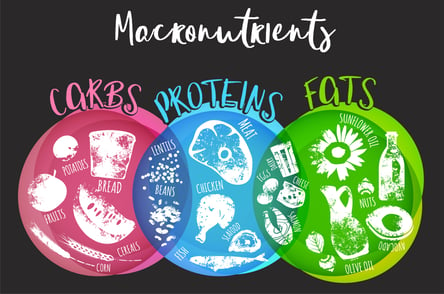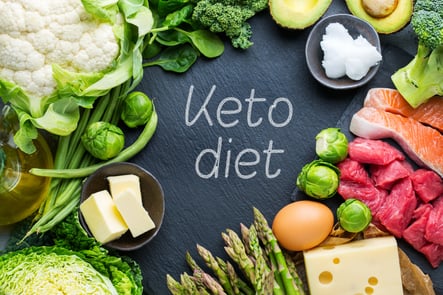Protein is one of the essential macronutrients the body needs. Because the body cannot produce it on its own, we must acquire protein through our diet. It plays a critical role in muscle repair, immunity, and satiety—making it an important part of daily nutrition.
Muscle Repair
Exercise breaks down muscle tissue, creating microscopic tears. Amino acids from the protein you consume help repair and rebuild this tissue, leading to stronger muscles over time. Without adequate protein intake, the repair process becomes inefficient and may limit muscle growth.
Immunity
Your immune system depends heavily on protein. Immune cells—such as white blood cells and antibodies—are built using amino acids. Without enough protein, your body produces fewer of these protective cells, increasing your susceptibility to illness.
 Satiation
Satiation
Protein also helps regulate appetite. When you’re hungry, your body releases the hormone ghrelin, signaling the need to eat. Eating protein reduces ghrelin levels and increases hormones like GLP-1 and peptide YY, which promote fullness.
Protein also has a higher thermic effect than carbohydrates or fats, meaning your body burns more calories digesting it. This can help reduce cravings and prevent overeating.
Snack Ideas
Getting enough protein isn’t always easy—especially with fast-paced schedules. Here are some convenient, protein-rich snack and meal ideas to help you meet your goals.
- Greek yogurt parfait: Combine Greek yogurt, berries, and granola for a quick, portable option that supports your nutrition needs.
- Tuna options: A tuna wrap or tuna with whole-grain crackers provides a lean, high-quality protein source that fuels a busy day.
Vegetarian Options
For those following a vegetarian diet, a quinoa bowl is an excellent base. Quinoa is a complete protein, offering all essential amino acids. Lentil soup or lentil salad are also great plant-based sources of protein and fiber.
Athletes
Athletes engaged in intense training need consistent protein intake for proper recovery. A classic chicken-and-rice meal offers lean protein and complex carbohydrates for sustained energy. When time is limited, a high-quality protein shake can be a convenient way to meet daily needs. Visit a local nutrition store to find a mix that aligns with your goals.
While meeting nutrition needs can be challenging, ensuring your body gets enough protein is essential for performance, recovery, and overall wellbeing. Incorporating protein-rich foods into your daily routine can support muscle repair, strengthen your immune system, and help maintain a balanced, satisfying diet.

 As athletes, we understand the importance of fueling our bodies properly to perform at our best. Whether you're hitting the gym regularly, training for a marathon, or simply aiming to lead a healthy lifestyle, how you balance your plate can significantly impact your energy levels, recovery, and overall well-being. That's why I'm introducing the concept of "Performance Plates" – a simple yet effective way to structure your meals based on your activity level and goals.
As athletes, we understand the importance of fueling our bodies properly to perform at our best. Whether you're hitting the gym regularly, training for a marathon, or simply aiming to lead a healthy lifestyle, how you balance your plate can significantly impact your energy levels, recovery, and overall well-being. That's why I'm introducing the concept of "Performance Plates" – a simple yet effective way to structure your meals based on your activity level and goals.
.jpg?width=391&height=347&name=GettyImages-1261754581(2).jpg) The Cornerstone of Nutrition: Caloric Intake
The Cornerstone of Nutrition: Caloric Intake
 If you’ve been into fitness for a while, you likely know how important it is to fuel and replenish your body before and after exercise with the proper nutrition. However, you might be uncertain and confused about why, when, and what to eat and drink to optimize your workouts.
If you’ve been into fitness for a while, you likely know how important it is to fuel and replenish your body before and after exercise with the proper nutrition. However, you might be uncertain and confused about why, when, and what to eat and drink to optimize your workouts.  1. Do make a plan to manage your stress level.
1. Do make a plan to manage your stress level. Protein bars make a great snack when you’re short on time or don’t have a big appetite. However, these days there are so many different protein bars available to choose from that picking the right one can be difficult. Some protein bars are relatively healthy; however, many are just fancy candy bars with a lot of sugar and saturated fat, and only a few grams of protein. When picking a protein bar, here are the top five
Protein bars make a great snack when you’re short on time or don’t have a big appetite. However, these days there are so many different protein bars available to choose from that picking the right one can be difficult. Some protein bars are relatively healthy; however, many are just fancy candy bars with a lot of sugar and saturated fat, and only a few grams of protein. When picking a protein bar, here are the top five 
 Do you feel like you get stuck in a rut eating the same things from week to week? On one hand it makes life a lot easier, right? You don’t have to scour through recipes, find that one illusive ingredient on the top shelf in the last aisle you looked in, or put the effort into prepping a meal that claims “30-minute prep” but in fact took you two hours. I completely understand!
Do you feel like you get stuck in a rut eating the same things from week to week? On one hand it makes life a lot easier, right? You don’t have to scour through recipes, find that one illusive ingredient on the top shelf in the last aisle you looked in, or put the effort into prepping a meal that claims “30-minute prep” but in fact took you two hours. I completely understand! A diet that is balanced in its macronutrient distribution can help reduce the risk of disease and help with lasting weight loss. You might have heard of others tracking their “macros” and wondered if this is something that you need to do. So, why and how do you do this tracking?
A diet that is balanced in its macronutrient distribution can help reduce the risk of disease and help with lasting weight loss. You might have heard of others tracking their “macros” and wondered if this is something that you need to do. So, why and how do you do this tracking? The “keto diet,” which is short for ketogenic diet, is a low-carbohydrate, high-fat diet that is similar to the
The “keto diet,” which is short for ketogenic diet, is a low-carbohydrate, high-fat diet that is similar to the 